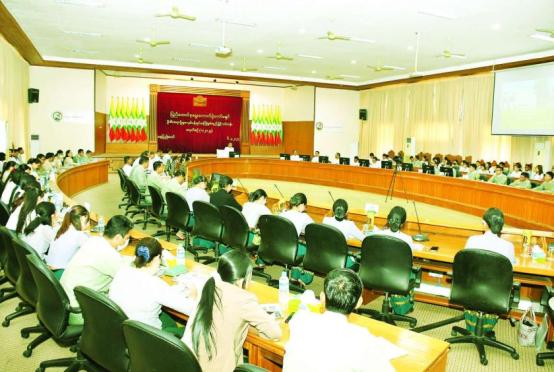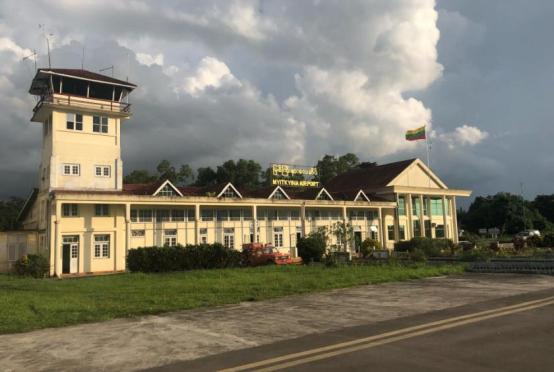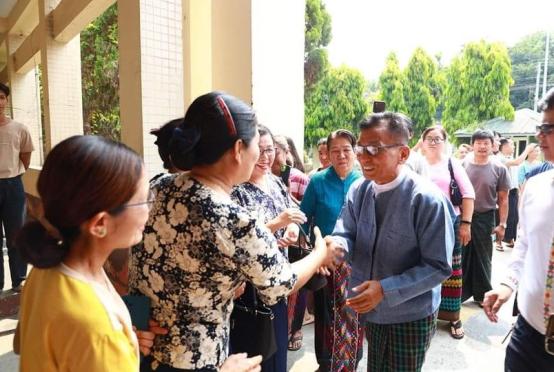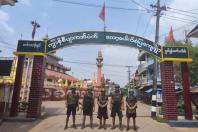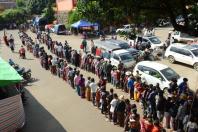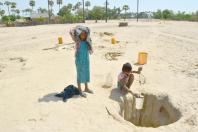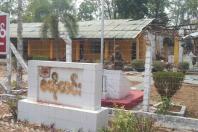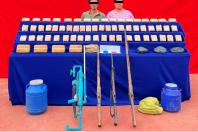
Kathmandu (The Kathmandu Post) - The incorporation of the Nepal-China Trans-Himalayan Multi-Dimensional Connectivity Network, including cross-border railway, in the joint communiqué of the second conference of the Belt and Road Initiative has renewed optimism in Nepal but the question remains: When will the Chinese rail arrive in Nepal and what are the preparations from both sides?
The conference, which concluded on Saturday, saw the participation of 40 heads of state, including President Bidya Devi Bhandari, and over 5,000 representatives from 150 countries.
Train from China has been one of the most talked-about topics in Nepal in recent years.
While the inclusion of the cross-border railway in the Belt and Road Initiative (BRI) is a significant step since Nepal signed up to Chinese President Xi Jinping’s flagship foreign policy initiative in May 2017, opinions are still divided.
There not only is a tough terrain that needs to be overcome for the project to materialise, it also entails geopolitical concerns. Then there are some--from Nepal and Western countries--who caution about a possible debt trap.
“But it all starts with the detailed project report,” said Ananta Acharya, former director general of the Department of Railway. “Preparing the detailed project report itself is an arduous task. It needs frequent drilling and soil tests, and due to the difficult geographical terrain, technicians need to fly on choppers to carry out geological studies.”
As of now, Nepal and China are yet to arrive at consensus on the funding modality for the detailed project report.
Officials said they are expecting some sort of understanding on the funding modality of the detailed project report after a meeting between President Bhandari and her Chinese counterpart Xi on Monday at the Great Hall of the People.
A majority of leaders in the current KP Sharma Oli administration are for seeking a soft loan, aid and technical assistance from China to move the project ahead if the detailed project report shows promising signals.
“The discussion in the party and government is that the majority of funding should be made by the Chinese,” Narayan Kaji Shrestha, the spokesperson for the ruling Nepal Communist Party (NCP), told the Post. “A little portion can be borrowed, say, in the form of a soft loan, but these are just in the discussion phase,” said Shrestha, who is familiar with the developments.
Senior officials who are privy to the talks and negotiations with the Chinese side say mainly four factors will determine the extension of the railway project to Kathmandu.
First is the construction of Shigatse-Kerung railway line on the Chinese side. Railway line construction in Nepal is unlikely to start until China extends its railway to Kerung.
According to the latest Chinese report, the Shigatse-Kerung railway section spans over 500 kilometres and is expected to be completed latest by 2025.
After the announcement of the project, the Chinese side has repeatedly shifted its completion date and construction engineers say there is 20 percent variation in any kind of large infrastructure project, which means the Shigatse-Kerung railway may not complete by the 2025 deadline.
Construction of the Kerung-Kathmandu railway, once started, is expected to complete in nine years, according to two reports prepared by the Chinese side.
“We do not have good roads to ferry heavy equipment. Nor do we have modern technology for drilling,” Madhusudan Adhikari, secretary at the Ministry of Physical Infrastructure and Transport, told the Post. “The project is technically challenging. If we have all the infrastructure in place, we can complete the project within nine years from the date of commencement.”
Adhikari has held a series of meetings with his Chinese counterpart and is familiar with all reports prepared by both sides, including the recent one.
The findings of the detailed project report will be very crucial as they will determine the final length, alignment and cost, among other features.
“We are waiting for the confirmation from the Chinese side for the fourth meeting [to be held] in China,” said Adhikari. “We expect to finalise how to move the detailed project report [process] forward and its funding modality, among others.”
Discussion on the funding modality of the Kathmandu-Kerung project is not expected to start until the detailed project report is ready.
“We have not entered the stage of funding modality,” said another Nepali official who is familiar with the discussions with the Chinese side. “The government has yet to decide. We will start negotiations with China after the detailed project report is completed,” the official told the Post requesting anonymity because he was not authorised to speak with the media. “Nepal can make some investment in the project by taking soft loans if China does not agree to build it with its grant.”
He cited some examples of how China built such rail sections in Laos, Myanmar, Vietnam and other East Asian countries, where the Chinese chipped in 70 percent as soft loans while the rest of the total investment was injected by the host countries.
And this is where concerns grow over what many say the “debt trap”.
Government officials and ministers, however, have repeatedly made light of the debt trap issue, saying Nepal does not need to worry about that.
In an interview with the Post in February, Foreign Minister Pradeep Gyawali termed the debt trap “imported psychology”.
But a section of the international community has been regularly advising government officials to remain cautious.
In February, a senior American defense official’s remarks on Chinese investment in Nepal created quite a debate and prompted the Chinese ambassador in Nepal to issue a strong statement.
US Deputy Assistant Secretary of Defense for South and Southeast Asia, Joe Felter, had told journalists that some activities that China had been engaged in across the region--in Sri Lanka, the Maldives and Malaysia--were a cause of concern. “We welcome a constructive relation with China, we welcome the investment by China, but as long as that investment is designed to serve the interest of Nepal and not just China,” he had said.
The Chinese embassy in Kathmandu had retorted, taking exception to the American official’s remarks.
The international media on Saturday, after the conclusion of the second BRI conference, reported that Chinese President Xi this time took a soft approach, saying that the plan would deliver "high-quality" growth for all.
The six-year-old Chinese infrastructure initiative, also dubbed a modern version of a Silk Road, seeks to link China with Asia, Europe and beyond through large-scale infrastructure projects.
The conference has been viewed with a lot of enthusiasm in Nepal, as this is for the first time the President has participated in the forum. Then deputy prime minister and finance minister Krishna Bahadur Mahara participated in the first BRI conference, immediately after Nepal signed up to the initiative.
While the United States absented this time from the conference, some Western countries, including Britain, France and Germany, sent their representatives. According to the Reuters news agency, these countries have expressed concerns about transparency.
The Global Times, a mouthpiece of the Chinese government, however, lashed out at critics in its Friday editorial, saying those who look askance at China’s infrastructure initiative are “ridiculed by common sense and reality”.
“For the sake of attacking China, the United States and other critics have lost their abilities to use logic and common sense, and even rational thinking,” the editorial read. “And for those especially confused in Washington DC, they have implemented nonsensical policies against China.”
Nepal’s another neighbour, India, too has refused to become part of the BRI, and in recent times has rather aligned with the United States in Washington’s Indo-Pacific strategy. US officials in December last year, coinciding with Foreign Minister Gyawali’s visit to Washington, said Nepal “is part of the Indo-Pacific strategy”. This also had caused some concern in Kathmandu with experts saying this could bring friction between Kathmandu and Beijing.
Given the geopolitical scenario, some say, for Nepal, which now has already committed to the BRI, it could be a tightrope walk when it comes to striking a fine balance.
Nonetheless, Nepali officials who are familiar with developments on the project say that for the Chinese rail to come to Nepal, China needs to commit to the project.
“Chinese rail will not arrive here if the Chinese do not want. And if the Chinese side wants it to come to Nepal, it will come even if we don’t want. It all depends on China’s will,” knowledgeable officials who have participated in various negotiations with the Chinese side told the Post.
On Saturday, Foreign Minister Gyawali, during a programme at the Nepali embassy in Beijing, said the Chinese president expressed his keen interest to extend cooperation to Nepal. “China will always stand by Nepal to help her achieve the goal of ‘prosperous Nepal, happy Nepali’,” Gyawali quoted Xi as saying.
http://kathmandupost.ekantipur.com/news/2019-04-29/inclusion-of-railway-...

